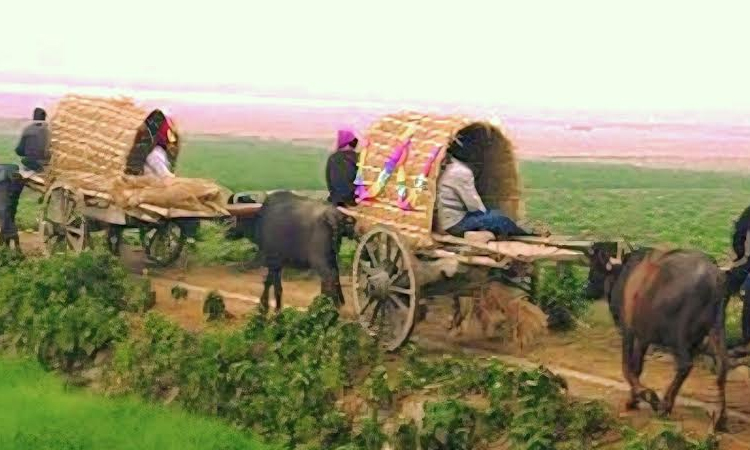News Flash

By Bipul Islam
LALMONIRHAT, Aug 28, 2025 (BSS) - Once the heartbeat of rural mobility in northern Bangladesh, the bullock or buffalo cart now lingers only in memory and melody.
In Lalmonirhat, as in many districts of the region, these humble wooden carts were more than just transport; they were symbols of community, celebration, and agrarian life. From ferrying golden sheaves of paddy and bundles of jute to carrying brides in joyous wedding processions, the cart's creaking wheels once rolled through every chapter of village existence.
This bullock or buffalo cart was once an inseparable part of rural life not only in Lalmonirhat, but also many parts of the country, especially in the northern region. The popular folk song "Amar gorur garite bou sajiye..." (My bride rides the bullock cart...) still evokes memories of that bygone era.
With the advent of the mechanical age, this slow-paced yet eco-friendly vehicle has now nearly vanished.
According to historical records, the first wheeled carts were used around 4,000 years ago in ancient Mesopotamia. Later, bullock carts became a widely used mode of transportation in the Sindhu Sabhyata (Indus Valley Civilization) and across the Indian subcontinent.
Octogenarian Ramjan Ali, a resident of Khuniagachh Union in Lalmonirhat Sadar Upazila, reminisced that
"Two decades ago, weddings couldn't happen without bullock carts. From the groom's procession to transporting goods, everything depended on them."
He added, "Families who owned bullock carts were held in high regard. Even now, we sometimes spot bullock carts in some areas of our village, which stirs deep memories in our hearts."
Elderly farmer Azgar Ali from Mohishkhocha Union in Aditmari Upazila shared, "Even today, bullock carts are occasionally used in farming. The bullock cart is tied closely to rural culture and has even inspired Bhawaiya songs. Folk songs like 'Oki gariyal bhai' and 'Aste bolaow gari...' still stir people's emotions."
Yet, due to the dominance of modern motor vehicles, bullock carts have become almost obsolete.
"In the days when these regions relied entirely on agriculture, the bullock cart was the mainstay of transportation. Today, it's become a mere chapter of history, replaced by engine-powered vehicles," said school teacher Masud Rana Biplob from Lalmonirhat.
Veteran farmers Abu Salam and Ibrahim Haque from Mahendranagar union said bullock carts were used for everything, from harvesting rice to wedding processions.
It was a completely fuel-free, pollution-free, and accident-free mode of transportation, they added.
Veteran journalists said nowadays, many rural children don't even know what a bullock cart looks like. Although they are displayed at folk fairs or cultural events, such appearances are only symbolic efforts to preserve a vanishing tradition.
Assistant Professor and Cultural Researcher Jahangir Alam of Rangpur Police Line School and College said, "The bullock cart was more than a means of transport, which was deeply embedded in Bengali culture and rural life."
"Though its use has declined due to technological advances, it is vital to preserve it as a cultural heritage. Even as it fades into extinction, the golden days of the bullock cart still live vividly in memory," he added.